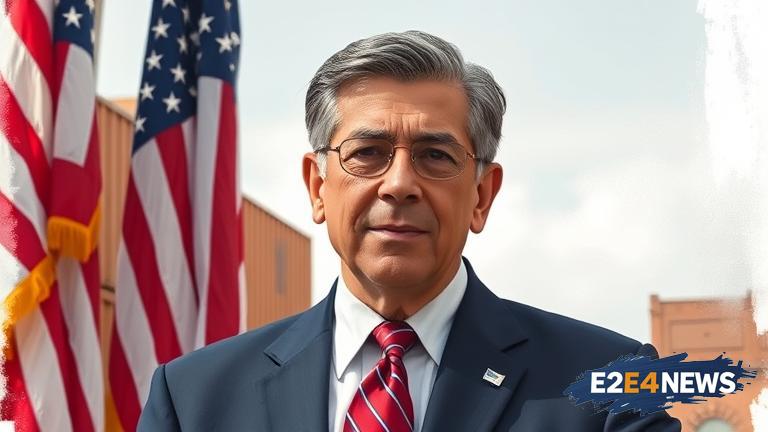The US trade policy has undergone significant changes in recent years, with a shift towards higher tariffs and new trade agreements. During a recent stop in Illinois, Rep. Darin LaHood defended the new approach, citing the need to protect American industries and workers. The Representative argued that the previous trade agreements had led to a significant trade deficit, which has been detrimental to the US economy. He emphasized that the new tariffs are aimed at leveling the playing field and ensuring fair trade practices. However, critics argue that the higher tariffs will lead to increased costs for consumers and businesses, ultimately harming the economy. The new trade agreements, such as the US-Mexico-Canada Agreement (USMCA), have been touted as a success by the administration, but others claim that they do not go far enough in addressing key issues. The USMCA has been praised for its provisions on labor and environmental standards, but critics argue that it does not adequately address concerns around intellectual property and digital trade. The trade policy shift has also led to tensions with other countries, including China, with which the US has been engaged in a trade war. The tariffs imposed on Chinese goods have led to retaliatory measures, causing concerns about the impact on global trade. Despite the challenges, Rep. LaHood remains optimistic about the future of US trade policy, citing the potential for new agreements and partnerships. He emphasized the need for a comprehensive approach to trade, one that takes into account the complexities of the global economy. The Representative also highlighted the importance of supporting American businesses and workers, particularly in the manufacturing sector. However, others argue that the focus on protectionism and tariffs is misguided, and that the US should instead prioritize free trade and multilateral agreements. The debate around US trade policy is likely to continue, with both sides presenting strong arguments. As the global economy continues to evolve, it remains to be seen how the new trade agreements and tariffs will impact the US and its trading partners. The administration’s approach to trade policy has been marked by a willingness to challenge traditional norms and practices, leading to both praise and criticism. The use of tariffs as a tool for negotiating trade agreements has been particularly contentious, with some arguing that it is an effective means of achieving better deals, while others see it as a blunt instrument that can harm the economy. The impact of the trade policy shift on American consumers and businesses is still being felt, with some industries benefiting from the new agreements and others facing significant challenges. The agricultural sector, for example, has been hit hard by the trade war with China, with many farmers facing significant losses. However, other industries, such as the steel and aluminum sectors, have seen a boost in demand and production due to the tariffs. The US trade policy shift has also led to a re-evaluation of the country’s relationships with its trading partners, with some countries seeking to strengthen ties and others looking to diversify their trade relationships. The European Union, for example, has been seeking to negotiate a new trade agreement with the US, while also pursuing agreements with other countries. The UK, meanwhile, is seeking to establish itself as a major trading nation outside of the EU, with a particular focus on strengthening ties with the US. As the global trade landscape continues to evolve, it is likely that the US will face significant challenges and opportunities in the years to come. The ability of the administration to navigate these complexities and achieve its trade policy goals will be closely watched by businesses, consumers, and trading partners around the world. The US trade policy shift has significant implications for the global economy, and its impact will be felt for years to come. The use of tariffs and other trade measures has the potential to either boost or harm the economy, depending on how they are implemented and negotiated. The administration’s approach to trade policy has been marked by a willingness to take risks and challenge traditional norms, leading to both praise and criticism. As the debate around US trade policy continues, it is clear that there are no easy answers, and that the path forward will be shaped by a complex array of factors, including politics, economics, and diplomacy.
